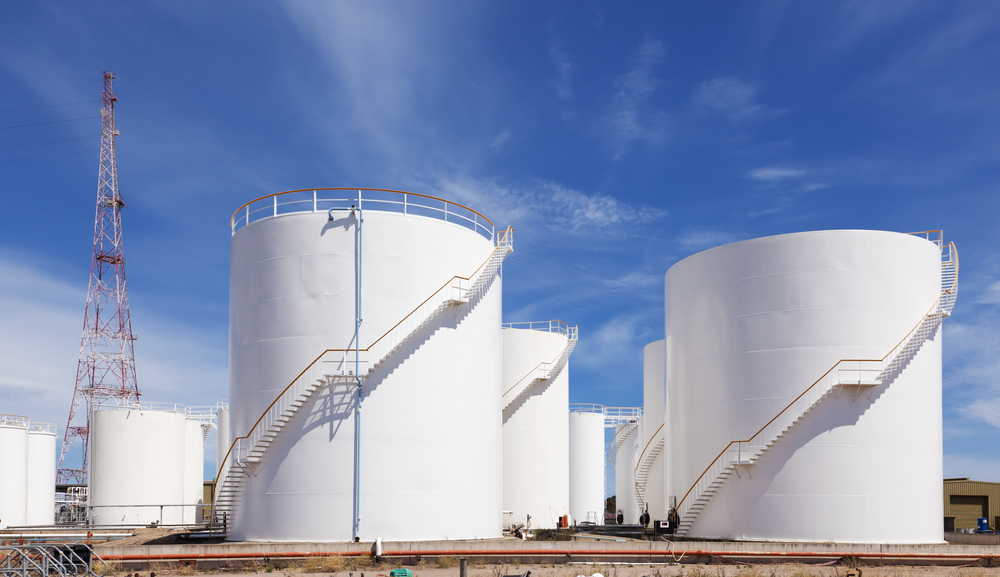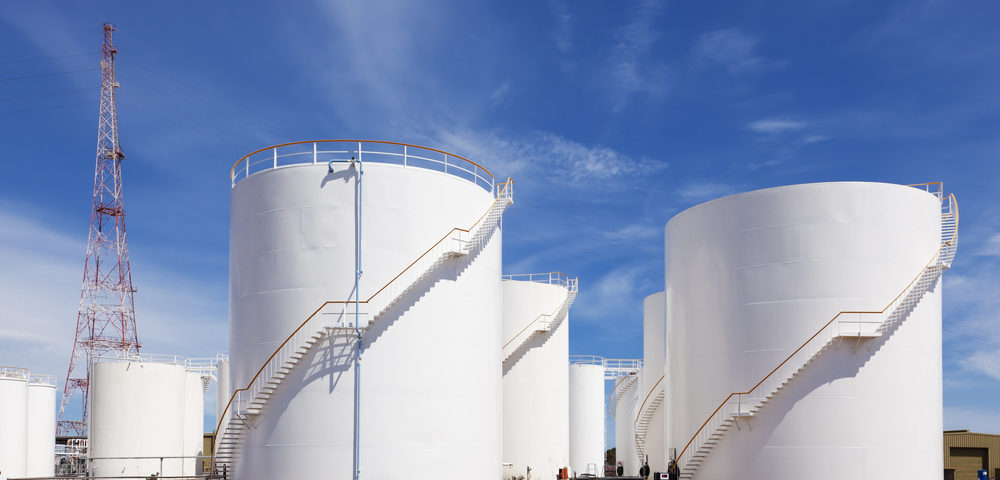
Storage tanks are used throughout the oil and gas industry for the bulk containment of fluids at different stages of the refinery process. Most often, products are stored for a short time before being transported for further processing.
The American Petroleum Institute’s API 650 standard outlines minimum requirements for the design, fabrication, erection, and inspection of welded storage tanks in the oil and gas industry. In this blog, we’ll look at the two most common types of tanks used for these applications: fixed roof and floating roof tanks.
Fixed Roof Storage Tanks
API 650 prescribes storage tank design requirements that minimize the risk of structural failure and potential damage to the environment. The standard does not prescribe tank dimensions or features that should be included in the design. These are specified by users to suit their individual needs and application.
Some primary features of fixed roof storage tanks include:
• Sampling and gauging hatch – Sometimes referred to as a thief hatch, this is necessary to retrieve samples of contents for analysis. It is also used as an access point for a dip-stick to gauge the level in the tank and to check level measuring instruments.
• Vapor vent – The vapor vent is an essential feature of a tank and is often called a breather valve. Without a properly functioning vapor vent, tanks are subject to damage from the buildup of pressure when filling. They also are at risk of imploding from the vacuum created during emptying.
• Relief valve – Relief valves are designed to relieve excess pressure should it rise above the safe operating limit.
• Inert gas blanket – Inert gas blankets are used to displace air that may form an explosive or flammable mixture with vapors from volatile liquids in the tank. Nitrogen is often used for this purpose.
• Drain– Drains are used to remove any water that separates from the product. They also are used to empty the tank during cleaning operations.
• Fire protection – Tanks are often fitted with a ring of nozzles that spray foam into and over the surface of the tank in the event of a fire.
• Earth connection – Static electricity tends to form during filling and emptying of the tank. This constitutes a potential explosion or fire hazard, especially when handling flammable liquids. An earth connection prevents the buildup of static electricity.
• Manhole – Manholes can be located on the roof of the vessel or at ground level to facilitate access to the inside of the tank for inspection, cleaning and maintenance.
Floating Roof Storage Tanks
Many tanks are designed with a roof that floats on top of the liquid. The floating roof moves up and down as the level of liquid in the tank changes during filling, emptying or with ambient temperature variation.
A floating roof minimizes the amount of vapor between it and the liquid, leaving little space for evaporation and reducing vapor losses. In many older tanks, the floating roof is merely a large flat disc covering the surface of the liquid. However, in recent years, the design of floating roofs has substantially improved to minimize vapor loss.
There are two main types of floating roof storage tanks in use today. They are:
• The pontoon roof – Pontoons are closed compartments that are fitted to the outer edge of a central plate under the roof, which allow the roof to float on top of the liquid.
• The double-deck roof – As the name suggests, this design incorporates two decks of steel plates separated by compartments covering the entire surface area of the decks. This provides added stability and is advantageous because the lower deck in closest proximity to the liquid is not exposed to the sun’s rays, which considerably reduces vapor losses.
Floating roof storage tanks share many of the features as fixed roof tanks, with some notable differences:
• Access ladder – The access ladder extends over the top and down the inside of the tank. As the floating roof moves up and down, the internal ladder slides back and forth on a track.
• Seal – A strip of flexible, rubberized material is used to provide a seal between the rim of the floating roof and the tank shell to reduce vapor leakage.
• Water drain – The roof slopes slightly to a well in its center. Rainwater runs into this water trap and is drained to the outside of the tank via a flexible pipe.
• Roof supports – Support legs are fitted underneath the roof to leave a space when the tank is empty. This enables access for cleaning and maintenance.
The Right Tank is Application-Specific
Choosing the right type of storage tank will largely depend on the specific needs of the operator, as well as the unique requirements of the application. In all cases, ensuring that tanks and pressure vessels are designed, fabricated, and installed/erected in accordance with all applicable standards is critical to minimizing vapor losses, maximizing useful life, and preserving the safety of individuals working in and around the tank.
Honiron Manufacturing is an industry leading designer and fabricator of tanks and pressure vessels for oil and gas applications.
